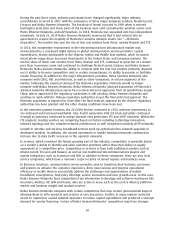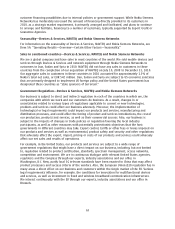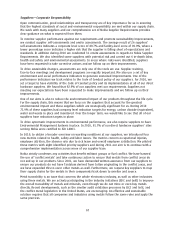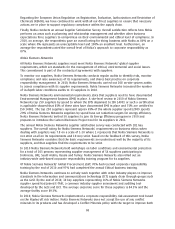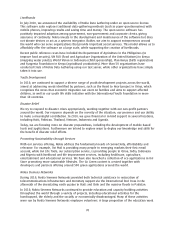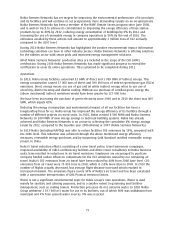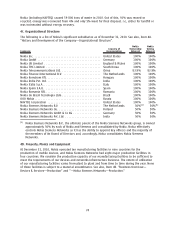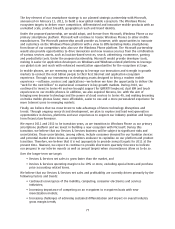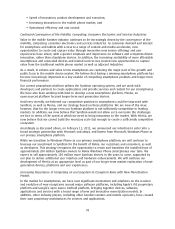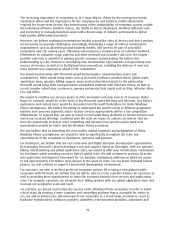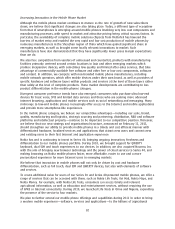Nokia 2010 Annual Report Download - page 73
Download and view the complete annual report
Please find page 73 of the 2010 Nokia annual report below. You can navigate through the pages in the report by either clicking on the pages listed below, or by using the keyword search tool below to find specific information within the annual report.RoHS). Additionally, our products do not contain substances included in the current EU REACH
Candidate List of Substances of Very High Concern, which the EU REACH regulation requires to be
reported.
We have also voluntarily phased out PVC from all mobile devices and enhancements since 2006. We
are currently voluntarily phasing out the use of brominated and chlorinated compounds and
antimony trioxide. At the end of 2010, a total of 46 Nokia models available on the market are free of
these substances, based on Nokia Substance List definitions. Our new mobile phones and accessories
are also fully free of brominated and chlorinated compounds and antimony trioxide as defined in the
Nokia Substance List, which is available on our website.
We continue to improve our packaging, increasing our use of renewable, paperbased materials to
over 95% of total packaging materials. Our packages are 100% recyclable. Since 2008, the sales
packages of all new devices have been smaller than their earlier equivalents, and the reductions
continue. Smaller and lighter packaging has also reduced transportation loads, and these factors
together have translated into significant cost savings.
Energy Savings in Nokia Products
We have introduced energy saving features throughout our product portfolio, including
energyefficient chargers. Over the last decade, we have reduced the average noload energy
consumption of our chargers by more than 80% and our bestinclass chargers by over 95%. We have
reached and exceeded our target of reducing noload power used by our chargers by 50% from 2006
to 2010. The target was already reached during the second half of 2009 and during 2010 the noload
power consumption was further decreasing and finally exceeding the target with 18%. The noload
energy consumption of a charger is the amount of energy the charger continues to consume if you
forget to unplug it from the wall outlet once the phone is fully charged.
Recycling Nokia Products
In 2010 we have continued our work globally to raise consumers’ awareness about mobile phone
recycling. After a product is no longer in use our recycling programs target to ensure that unusable
products do not end up in landfill sites. Our target in takeback is to build up and widen our
collection and recycling infrastructure together with various local partners in order to build a
recycling culture. In our service center network, the aim is to provide people with a one stop process
to limit the transportation of devices as much as possible. Additionally, all of the nonrepairable
products are sent to ecoefficient recycling. Of the materials in a mobile phone, 100% can be
recovered and used to make new products or generate energy.
Nokia Siemens Networks: Environment
The focus of Nokia Siemens Networks’ environmental strategy is to achieve a net positive impact on
the environment. This will be delivered by:
• Minimizing its environmental footprint.
• Combining environmental and business benefits for a sustainable solution.
• Maximizing the positive impact of telecommunications on other industries.
Nokia Siemens Networks continues to hold a leadership position and offers the industry’s most
comprehensive range of energy solutions for telecoms operators, combining products and services.
This portfolio is designed to reduce the network operating costs of new and legacy
telecommunications networks, these solutions can reduce power consumption and resultant GHG
emissions by exploiting more efficient technology and renewable energy.
By the end of 2010 Nokia Siemens Networks had deployed more than 390 sites running on renewable
energy in 25 countries encompassing AsiaPacific, China, Europe, Middle East, Africa and Latin America.
72


